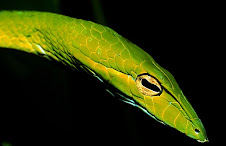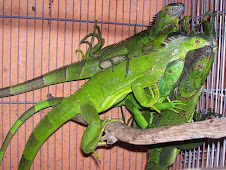
The beautiful pit-viper occurs in only a small part of Southeast Asia, which is Southern Thailand and northern Peninsular Malaysia. This viper is aptly-named due to its vivid patterning of jagged redddish and purplish spots and bands across the dorsum and flanks as well as the head. An ill-defined white ventrolateral line is present while the eyes are white.
Not much is known about the ecology of this small-bodied arboreal viper species, but it is believed to be similiar to Trimeresurus kanburiensis, which has a similiar pattern but different range, and is almost indistinguishable on surface appearance from Trimeresurus venustus. This viper species feeds on frogs, lizards and small mammals in the wild












